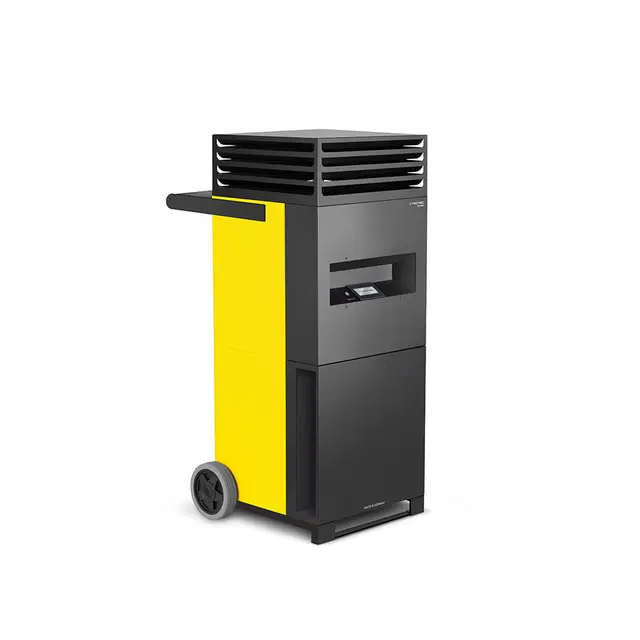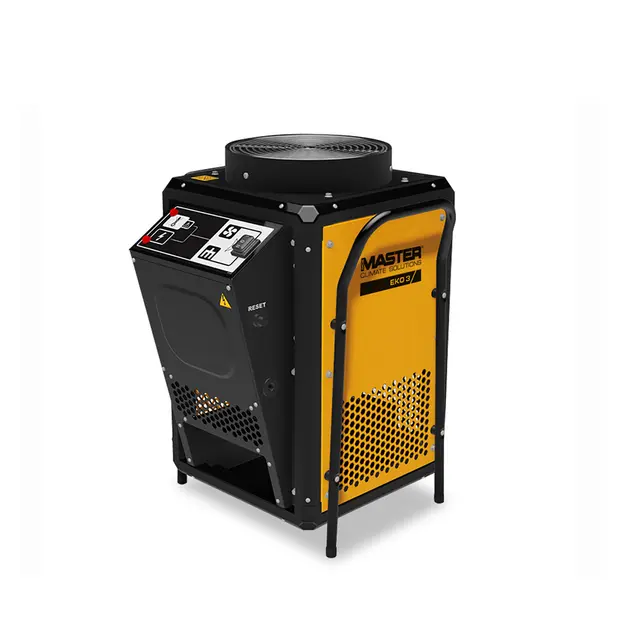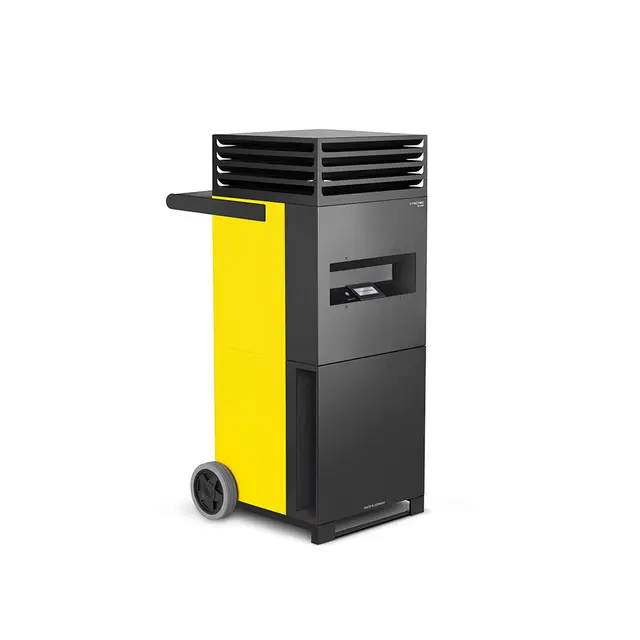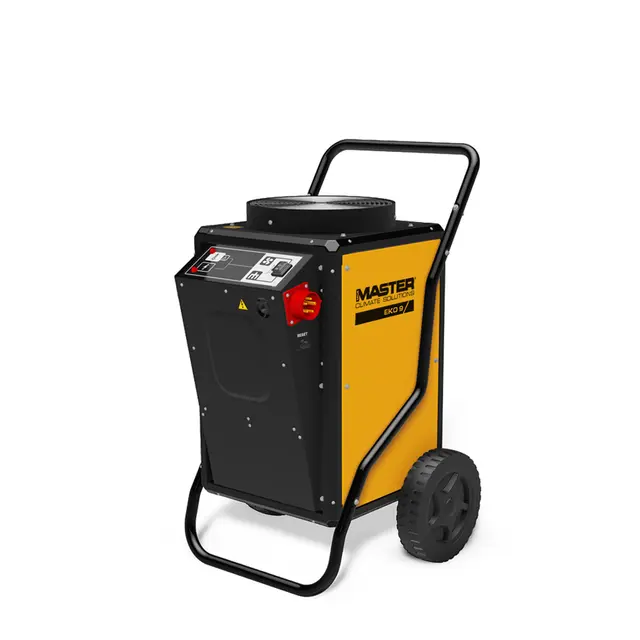Harnessing heat for effective disinfection
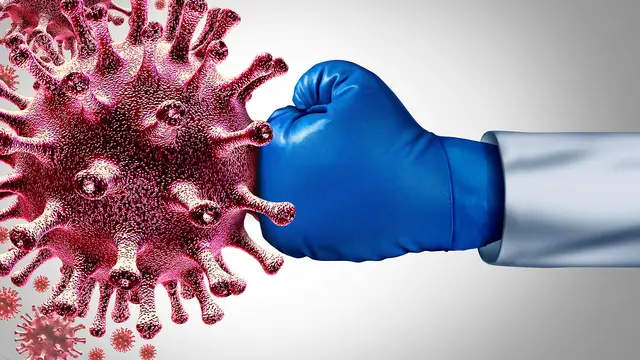
- Home
- Insights
- Heating insights
- Harnessing heat for effective disinfection
Find out why disinfection by heat often delivers more efficient, reliable and comprehensive results in eliminating bacteria and viruses than its chemical alternatives.
Particularly in a post-COVID landscape, the importance of thorough, effective disinfection has never been greater, both in densely populated areas and healthcare settings.
In order to remove the risks that bacteria and viruses pose to people’s health, many rely on chemical disinfectants for the job. But, this approach carries several key drawbacks, including:
They only kill the bacteria and viruses in the spots they are directly applied to
They often leave pungent, unpleasant odours
They can cause irritation or damage to the eyes
They aren’t always environmentally friendly to produce
With this in mind, disinfection through heat offers a potent alternative for teams looking for the most comprehensive coverage in their efforts to kill bacteria and deactivate viruses. When controlled with the right equipment, heat is the ultimate approach to disinfecting rooms, vehicles and other spaces.
If you have yet to harness the power of heat for your disinfection duties, you are about to discover the difference it delivers
A brief history of heat as a disinfectant
Disinfection by heat is one of the most enduring forms of sterilising equipment and locations, with scientists recognising its potential for this purpose for centuries. Indeed, even as early as the late 19th century, heat’s ability to kill bacteria has been tested and recorded:
- Bacillus coli (E. coli) (60ºC after 10 minutes) – discovered by Friedrich Loeffler (1886)
- Bacillus typhosus (56°C after 10 minutes) – discovered by George Miller Sternburg (1887)
- Vibrio cholerae (55°C after 15 minutes) – discovered by Kitasato Shibasaburō (1889)
- Streptococci (60°C after 30 minutes) – discovered by Ayers & Johnson (1918)
- Dysentery bacilli (60°C after 10 minutes) – discovered by Runge & O’Brien (1924)
These are just some of the more notable examples of people’s longstanding knowledge of heat as an effective killer of germs. That hasn’t changed - only now, portable units such as Master’s impressive range of EKO heaters have made this scientifically proven practice more efficient and applicable than ever before.
What about COVID-19?
With COVID-19 being the most recent virus to capture the world’s attention, studies have revealed that this too can be deactivated through consistent exposure to high temperatures.
Research published in The Lancet in May 2020 confirmed that SARS-CoV-2 virus remains stable for long periods of time at low temperatures, but at greater temperatures the time it takes to become undetectable shrinks significantly:
- At 22ºC, SARS-CoV-2 will become undetectable on a surface after 14 days
- At 37ºC, SARS-CoV-2 will become undetectable on a surface after 2 days
- At 56ºC, SARS-CoV-2 will become undetectable on a surface after 30 minutes
- At 70ºC, SARS-CoV-2 will become undetectable on a surface after 5 minutes
By having access to machinery that can deliver a consistent flow of high heat safely, cleaning and disinfection professionals can eliminate all traces of COVID-19 in an area in a reasonable window of time.
You can discover more about the recommended temperature and time requirements for a wide range of bacteria and viruses on pages 6-8 of our extended brochure.
What are the advantages of heat disinfection?
Although thermal disinfection heating is typically not as fast as spraying and wiping a service with a chemical disinfectant, it does offer several advantages that make it an overall more effective approach to ridding environments of harmful germs:
It is non-toxic and environmentally friendly
As no chemicals need to be utilised in the creation and application of thermal disinfection, it is an environmentally-conscious method of removing bacteria and viruses, with no risk of chemical pollution. In addition, there is no chance of people suffering allergic reactions or dealing with unpleasant smells for significant periods as they might with some chemical disinfectants.
It is non-corrosive
When certain materials may be susceptible to corrosion or damage after coming into contact with the chemicals in a liquid disinfectant, applying heat for short periods of time can avoid these issues.
It covers a whole area, with no further cleaning necessary
Rather than just disinfect the localised area that a chemical disinfectant touches or is wiped into, the coverage offered by specialised heaters is far broader. This ensures that no spot is missed or needs to be re-cleaned.
It can penetrate materials for complete disinfection
Heat can go beyond the surface of rooms and objects, making sure that the entire structure is free of any germs that could be surviving deeper than in the top layer.
Machines are simple to setup and operate
After just a short amount of training, Master heaters can be easily configured and operated to deliver the most efficient and comprehensive extermination of living organisms.
Where can heat disinfection be applied?
Heat treatments can eliminate bacteria and viruses in a variety of applications, especially those where exposure to these can be particularly dangerous, such as places that are often densely populated or frequented by vulnerable people. These include:
Aeroplanes
Ambulances
Army barracks/field hospitals
Buses
Food storage containers
Hospitals
Hotels and hostels
Laboratories
Police cars
Prison cells
Rental cars
Train carriages
These are just some of the most frequent areas our EKO heaters have been utilised to eliminate any threats.
Of course, it is important to note that in order for these units to work as intended, they need to be applied consistently to the intended area. This requires the heater to be portable and easily powered, as well as the use of a digital temperature sensor to ensure even the coldest area of the room is heated to the set temperature.
Reducing the risk of thermal shock
Thermal shock can occur when an object or structure experiences a rapid change in its surrounding temperature (both hotter and colder), resulting in damage. This is particularly dangerous to ceramics and similar materials.
In order to remove any possibility of heat causing any unintended damage to an area in the process of disinfecting it, it is crucial that the increase in temperature happens smoothly and consistently, not suddenly. Our heaters are designed to do exactly this to greatly reduce any risk of collateral damage, while reaching temperatures significantly higher than many comparative models can achieve. At the same time, with their ability to increase the temperature by 15°C at a time, the heaters do not leave the insect enough time to escape.
Reap the benefits of thermal disinfection with Master
We hope this insight into the potential of using heat as a disinfectant has been useful in expanding your horizons beyond a reliance on chemical solutions. In many ways, heat offers the most efficient, consistent and reliable results in this area - particularly when it is applied through Master’s powerful EKO range.
EKO heaters are specifically designed to exterminate living organisms quickly and with the highest possible success rate.
Delivers high volumes of hot air with minimal energy requirements
Smooth temperature increases of 15°C each time
Connected to an external digital remote thermostat
High air flow to quickly mix the air in the room, allowing heat everywhere
Different sizes and power levels to cover both small and large spaces
Compatible with the Master IMCS remote monitoring and documentation device
To harness the power of heat in your efforts to disinfect areas thoroughly and responsibly, get in touch with our team today, or discover our full range of commercial and industrial heaters for more information.
Related products
Featured insights

How heaters outmatch chemicals in the quest to kill bed bugs and other unwanted pests

Improving air quality for the sake of public health
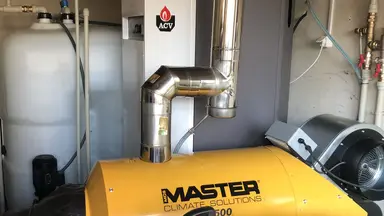
How heaters help certified cleaning companies sanitise food tanks
Need help with choosing the right solution? Our team of over 100 climate control experts can assist.
You can also reach out or join the discussion on our Social Media. Check out our LinkedIn page.
